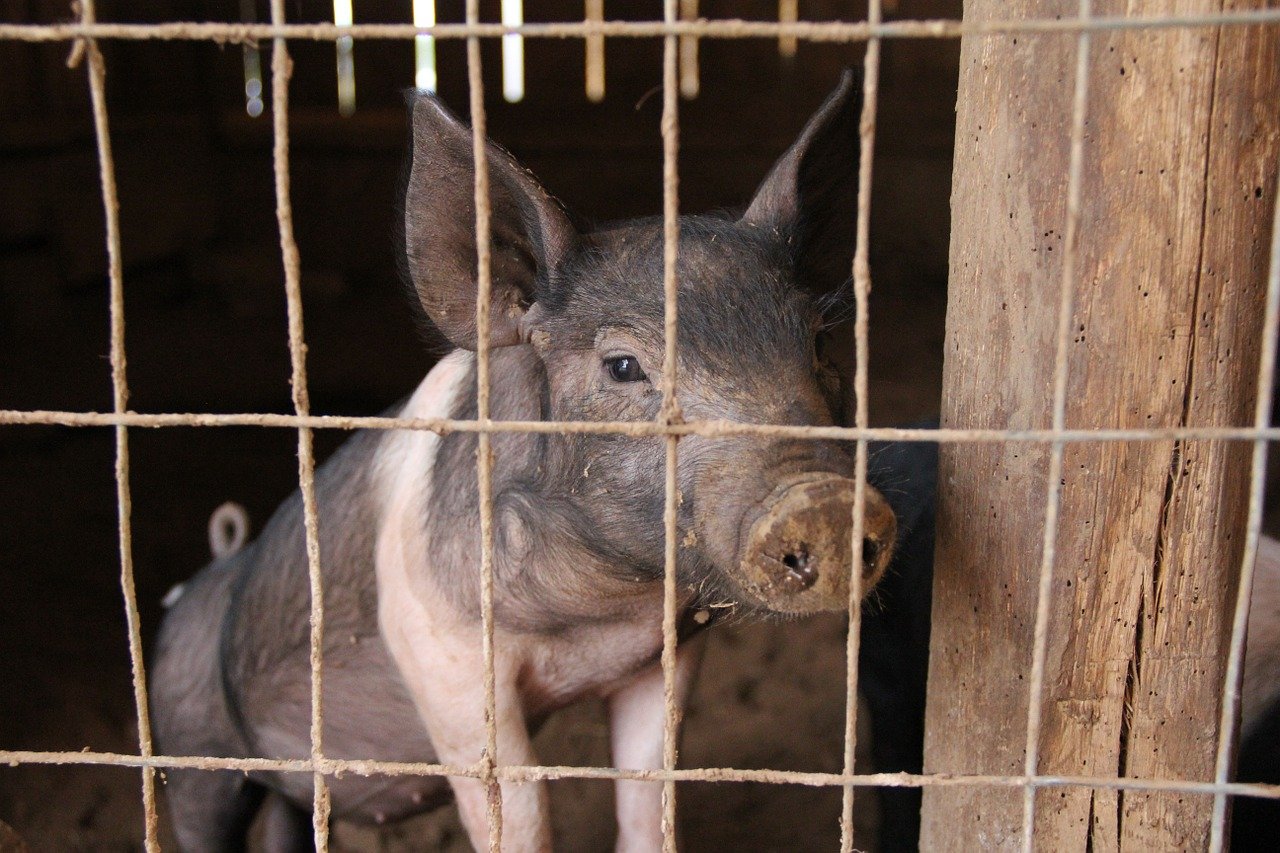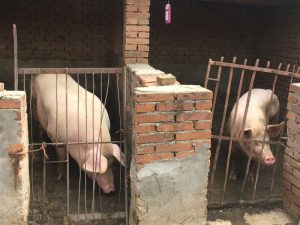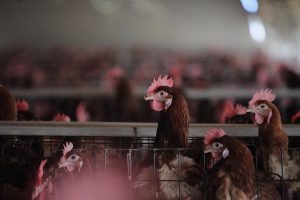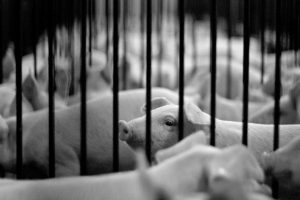Since the summer, African swine fever (ASF), a contagious viral disease that is potentially deadly to pigs, has spread to thirteen provinces in China. One of the latest incidents was in Tianjin, less than 100 kilometres from Beijing, where hundreds of pigs were destroyed en masse. Pork producers large and small are taking a hit from the mass cull of animals, price fluctuations, the introduction of stringent feed regulations, temporary market shut-downs and a ban on transporting livestock.
Given today’s globalised and complex livestock value chain it is still extremely difficult, if not impossible, to find out how the ASF virus entered the country and rapidly spread across provinces hundreds of miles away. Possible vectors and fomites include bloodsucking insects, animal feed, sick animals and contaminated trucks and equipment.
Typically, intensive farming involves over-crowded and unhygienic living conditions, an ideal breeding ground for pathogens. The inherently weaker immune systems (found in certain breeds selected for reproduction) render animals more susceptible to disease.
The ASF breakout highlights the intrinsic challenges facing China’s livestock industry, and the importance of reconsidering how the country produces and consumes meat. Experts and civil society groups are advocating for a spectrum of solutions, from transitioning towards more efficient and controlled production models, to curbing the over-consumption of meat products for environmental and health gains.
A sector transformed
A recent study by a multinational research group led by the Chinese Academy of Sciences examined China’s livestock farming transition between 1980 and 2010, shedding light on the achievements and challenges of the sector over this period.
According to the study, China’s animal agriculture has undergone a complete transformation in the past four decades; from a model based on largely local, integrated crop-livestock systems (where animals and their feed are raised on the same farm or lands nearby), to one dominated by intensive animal agriculture. The latter grew from producing 2.5% of the total number of China’s animals in 1980, to 56% in 2010; during which time the number of livestock nearly tripled.
The growth came with environmental and health costs. Emissions of ammonia and greenhouse gases from the livestock production chain more than doubled between 1980 and 2010.
Public health hazards
Diseases, such as ASF and the more dangerous swine influenza H1N1 and avian flu H5N1, spread more easily as a consequence of intensive farming. In addition, there are less visible but equally concerning issues such as antibiotic resistance.
More than half of the antibiotic consumption in China is driven by the livestock industry in an effort to prevent infection and promote growth but is also creating serious unintended consequences. Recently, public health researchers from Fudan University found antibiotic residues in 58.3% of school children’s urine samples collected in east China, including three antibiotics used in animal farming.
The same research group also found a strong association between the presence of veterinary antibiotic residues in children’s urine and the likelihood of being overweight or obese, which may suggest that animal-based foods can be a major source of antibiotic residue exposure.
Antibiotic resistance has grown to be a global public health threat. According to the Review on Antimicrobial Resistance, if drug resistance continues to rise along the current trajectory, by 2050, 10 million lives could be lost to antibiotic resistance globally every year – with a higher projected death toll than cancer.
Reconnect, replace, or both?
To solve the multifaceted challenges facing China’s animal-based food system, researchers suggest a new transition – reconnecting feed production and animal farming to re-build ecosystems with functioning nutrient cycles.
In doing so, the consumption of synthetic fertilisers could decrease, along with the pollution as run-off from feed crop fields is cut. Meanwhile, the recycling rate of nutrients in manure (natural fertiliser) would go up. When done right, restoring nutritional cycles has the potential to regenerate ecosystems and even sequester atmospheric carbon to mitigate climate change.
Reintegrating feed and animals into the same agricultural ecosystem may help de-intensify the current model of meat production and reduce inputs such as antibiotics. But to support such a transition, the society needs to come to terms with the idea of “less and better meat”, a message embraced by ecological producers and increasingly, middle-class consumers, as an environmental and health win-win.
Innovative “meat” production
The trend is clear with the rapidly growing number of “flexitarians” – people who are primarily vegetarian but occasionally eat meat. Recent surveys found that 38% of US consumers eat at least one meatless meal per week, and 42% of consumers in the UK have reduced their meat consumption or are interested in doing so.
Although similar surveys in China are yet to be carried out, the Ministry of Health already suggests in the 2016 Chinese Dietary Guideline a per capita meat consumption roughly 50% lower than the current level.
Animal product substitutes such as plant-based alternatives and lab-grown meat (meat produced by culturing animal cells, thereby eliminating the need for raising and killing animals for food) are newly emerging alternatives to traditional meat products that may reduce meat consumption, thereby easing the pressure on an ever more intensive meat production system from the source.
At a recent Good Food Conference in California, producers of a variety of animal product substitutes as well as leaders in related industries shared their enthusiasm for technological solutions. Some of these products resemble conventional meat to an extent that consumers supposedly cannot tell the difference.
Many people from these new industries believe that by replacing meat, eggs and dairy of animal origin with products made with less resource-intensive ingredients such as legumes, wheat, coconut, and nuts, the food industry can reduce its environmental footprints.
Investors are paying close attention to the emerging industry, too. Dao Ventures, a Sino-US impact investing group, is trying to introduce meat substitutes to the Chinese market. The company is also interested in nurturing local entrepreneurs in China to find their niche in the extremely diverse and rapidly modernizing food system and create the equivalence of plant-based Beyond Burger and Memphis lab-grown meat. The younger generation seems to be a major target group since they are more aware of the connection between food and the environment, and are relatively more open to technology-intensive solutions.
China’s livestock transition completely reshaped the country’s meat production and consumption in merely four decades. To meet the intertwining environmental, health and food security challenges posed by this a system-level solution is required.
While technological advances can help re-couple animal raising and crop production, or even produce meat without raising animals at all, it takes strong political will and consumers’ awareness of where their food comes from to create a sustainable food system and healthier society.








